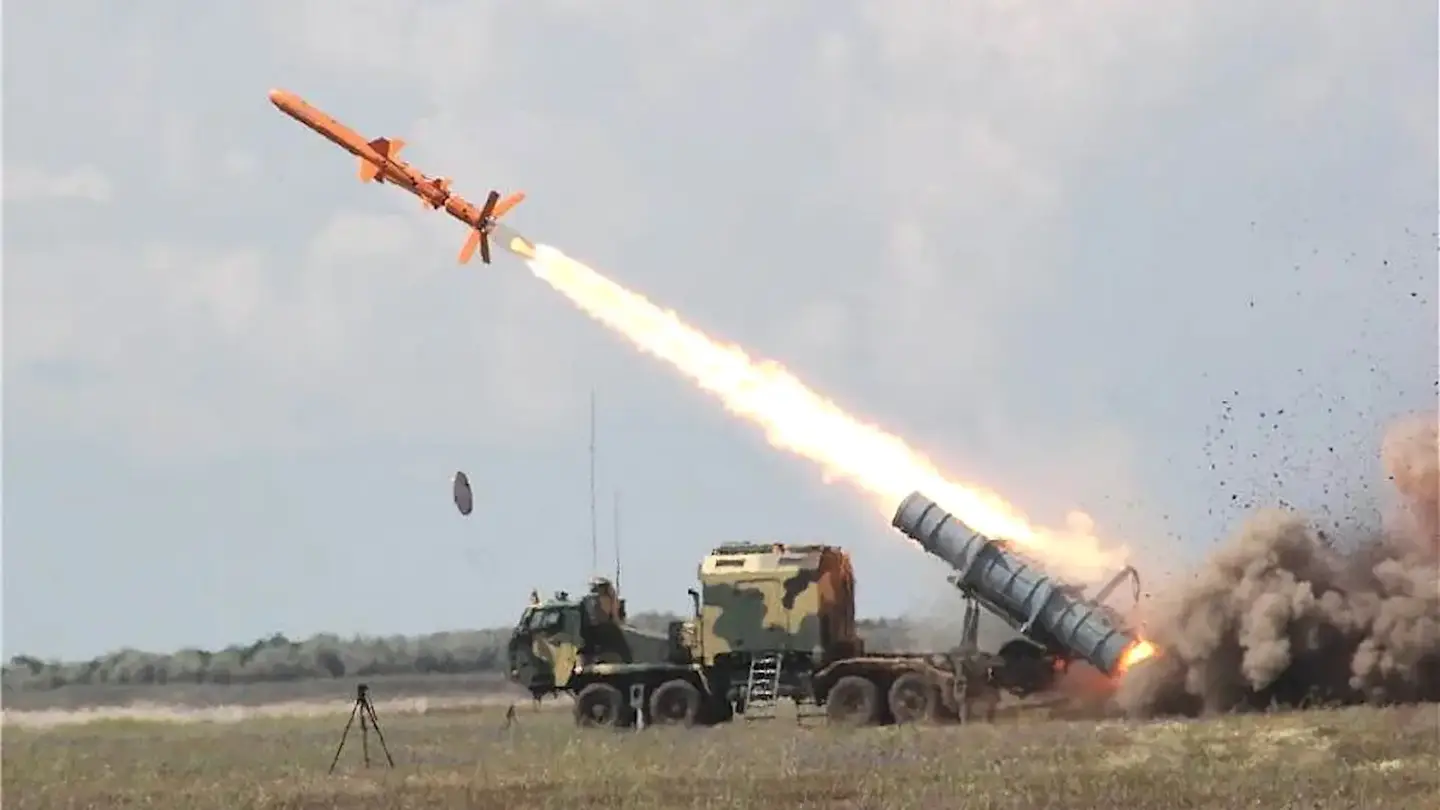Kyiv says a new weapon destroyed the Russian SAM system, others state it was a land-attack version of the Neptune missile.

Ukraine may have used a new weapon in this week’s attack on a Russian S-400 Triumpf SAM system in occupied Crimea.
Oleksiy Danilov, secretary of Ukraine’s National Security and Defence Council, confirmed Saturday that a new Ukrainian missile hit the S-400, but did not say what specifically “modern” weapon was used. You can read about that unprecedented strike in our previous reporting here.
Kyiv has previously hinted at new weapons used that will be used to conduct long-range strikes in occupied Crimea. Ukrainian journalist Yuriy Butusov (@UButusov) now reports the S-400 strike used an R-360 Neptune anti-ship missile modified for a land-attack role.
Best known for its use in sinking the Black Sea Fleet flagship Moskva, Neptune’s legacy could be just beginning if converted to a land-attack cruise missile. There has been talk for some time that Ukraine was working to adapt Neptune for the precision land attack role, with more recent claims in defense circles that this was indeed a high-priority program. Still, no proof that such a configuration exists.
The Neptune missiles were very limited in number when the war began with manufacturing more during the war, at least early on, being problematic. Eventually Ukraine got RGM-84 Harpoon from NATO countries to solidify its anti-ship capability and keep Russia’s Black Sea Fleet from its shores.
While converting an anti-ship cruise missile into a land attack weapon may seem straight forward, it really is not as simple as it sounds. The scale of difficulty is dependent on many factors, including the missile’s hardware capabilities to begin with, what types of flight profiles are needed over land, and how adaptable its targeting needs to be. Also, how much help Ukraine received for such an effort from its NATO allies would also be a factor.
Still, exactly what hit the S-400 remains unconfirmed. If this was in fact a Neptune land-attack variant, it’s unknown how exactly it reached the target or what vector it attacked from. Electronic warfare and other ways of degrading the air defenses of the battery and others around it could have been in play. That being said, this could also just be a new long-range kamikaze drone or something else.
Before we head into the latest news from Ukraine, The War Zone readers can catch up on our previous rolling coverage here.
The Latest
While Ukraine has made gains around Bakhmut and on its southern fronts, Russian forces continue attacks in the Kupiansk-Lyman sector, the British Ministry of Defense reported. In its latest intelligence update, the MoD noted that Russian doctrine suggests Moscow will try and regain the initiative with a pivot to the northeastern front, and offensive efforts in that area would intensify in the next two months.
A potential Russian effort could be pushing Ukrainian forces back across the Oskil River to create a buffer zone in Luhansk Oblast.
In a mid-day update to its control of terrain assessment on Saturday, the Institute for the Study of War (@TheStudyofWar) reported Ukrainian forces have advanced to a treeline 1,500 meters northeast of Novopokropivka, apparently confirming Ukrainian claims from previous days’ gains after taking Robotyne.
Additionally, recovered equipment suggests Russia has committed multiple regiments from the VDV’s 76th Air Assault Division to the southern front, an indication this relatively fresh division and one of Russia’s few units kept in reserve is now in the fight. Ukraine began committing reserves to the offensive a few weeks prior.
Zaluzhnyi, who reportedly brought his entire command staff for the “council of war” meeting, met with leaders on the Polish-Ukrainian border some 300 miles from Kyiv. Along with a burgeoning relationship between Zaluzhnyi and top British officer Adm. Sir Tony Radakin, The Guardian reported the meeting may have convinced Zaluzhnyi to concentrate forces on a single front as evidenced in this week’s push for Tokmak.
The New York Times reported Chairman of the Joint Chiefs of Staff Gen. Mark Milley reportedly urged a more concentrated attack strategy in a conference call on August 10, though Milley did not attend the meeting at the Polish border.
The Ukrainian Navy has reportedly created a brigade dedicated to its fleet of drone boats. The 385th Separate Brigade of Maritime unmanned Special-Purpose Complexes reportedly received a battle flag from President Volodomyr Zelensky during Independence Day celebrations.
Several NATO-supplied systems made appearances in Ukrainian service, including Leopard 1A5DK tanks supplied by the Netherlands, Denmark, and Germany.
Video also showed a Bofors L70 40mm autocannon in Ukrainian service, the Cold War-era anti-aircraft gun set up on its field carriage. Lithuania and the Netherlands have each donated a number of L70s to Ukraine.
A U.S.-supplied M1132 Stryker wheeled APC looks rather stuck in a trench, one of the vehicle’s wheels folded back after having probably hit the trench at speed during combat.
Video has emerged reportedly showing a downed Ukrainian drone in the waters off the Crimean Peninsula.
There’s a new contender in the Russian armored vehicle turret-toss contest. A BMD-4 airborne infantry fighting vehicle suffered a catastrophic explosion after a strike from Ukraine’s 77th Airmobile Brigade, the turret seen tumbling into the air and landing to the side as other ammunition cooks off.
Lastly, there’s this not-so-great launch from a Ukrainian 9K33 Osa (NATO: SA-8 “Gecko”) SAM system. Rather than heading off toward its target, the missile noses over into the field out in front of the launcher, making a rather muddy crater.
That’s all for now. We’ll update this story when there’s more to report on Ukraine.


